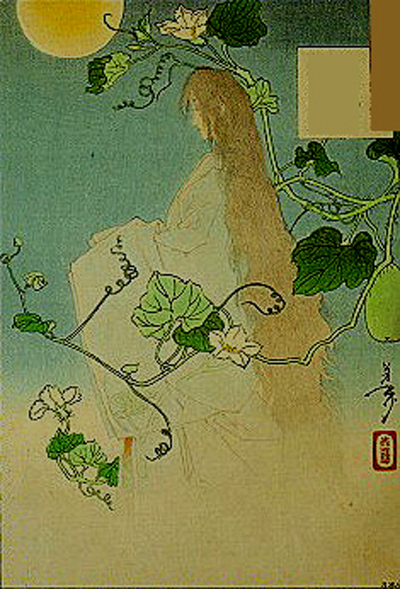 And Edo period depiction of Yugao from Tale of Genji by Yoshitoshi
( from "Thirty-six Ghosts"). Her name literally means "evening face" --
a flowering vine that blooms in the evening. Yugao was killed by Rokujo's
wandering spirit prior to Rokujo's attack on Aoi no Ue. Although
Yugao's ghost never appeared in the original story, here Yoshitoshi has
depicted her as a typical Edo period ghost. Why is her representation anachronistic?
How do the "yugao" vines add to the sense of the supernatural?
And Edo period depiction of Yugao from Tale of Genji by Yoshitoshi
( from "Thirty-six Ghosts"). Her name literally means "evening face" --
a flowering vine that blooms in the evening. Yugao was killed by Rokujo's
wandering spirit prior to Rokujo's attack on Aoi no Ue. Although
Yugao's ghost never appeared in the original story, here Yoshitoshi has
depicted her as a typical Edo period ghost. Why is her representation anachronistic?
How do the "yugao" vines add to the sense of the supernatural?

